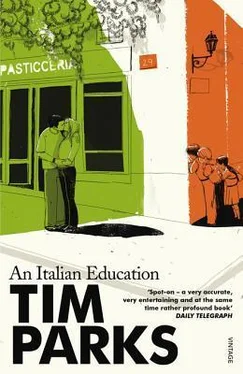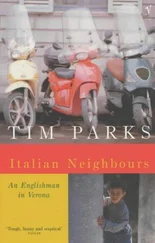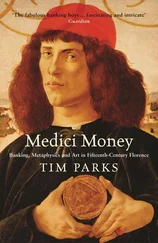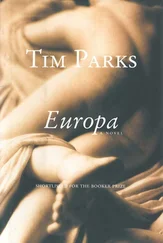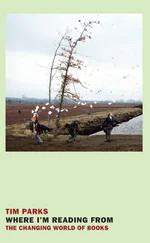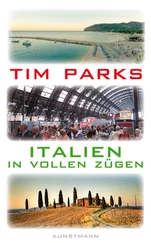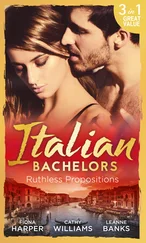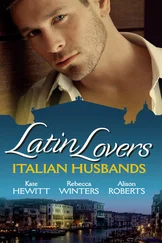Rita walks through the room with Michele in her arms and takes him out through the French window onto the balcony. The cool evening air will calm him down. Outside on the street children are kicking a ball at each other, standing to one side every time a car races past. Not a situation, I imagine, that Nascimbeni would wish to contemplate. Except in business terms.
‘And house insurance,’ the agent continues. ‘In fact, there’s one very interesting policy that might be of use to you now, in the sense that it covers not only against damage to household belongings, but any damage your children might do to somebody else, or their property. Imagine, for example, that your little boy, when he’s a bit older, was to push that basil plant off the balcony so it fell on somebody’s head. They could then sue you for damages, something this policy would cover, and the wonderful thing about it is that the premium remains the same however many children you have, so…’
When he has gone, we roll about on the bed laughing and facendo le corna at all the possible things that could go wrong, a satellite falling on our apartment, the leaning Tower of Pisa collapsing precisely the day we go up, etc. Until it occurs to me that fare le corna can also mean to betray one’s spouse (in the same way that, in Elizabethan English, horns were supposed to be visible, to the eye of faith, on a cuckold’s forehead). Facciamo le corna could thus mean, let’s betray your (or my) partner, and people here actually say: ‘Yes, so and so is away again, no doubt putting horns on her poor husband…’ Though one could hardly accuse poor Nascimbeni of having meant this double entendre. On the other hand, it is an eventuality against which no meaningful insurance cover can be offered. As with almost all the serious things in life.
I remember some years later the shock of recognition when, upon warning young Michele that by the time we got to the pasticceria there might not be any chocolate croissants left, he raised his two chubby fists, shot out forefinger and pinkie, and earnestly declared, ‘Facciamo le corna, Papà!’
Nascimbeni’s comments on house buying had not fallen on stony ground. As part of the obsession with security that manifests itself in tall iron fences defending bristling vegetable patches, prescriptions for every medical test under the sun and an instinctive fear of any food that does not form part of the traditional national diet, it has become a generally acknowledged truth in Italy that a couple should not embark upon a family until they own the bricks and mortar they live in. Perhaps this has to do with the fact that the language makes no distinction between the idea of house, the physical place, and home, the emotional base. Both are contained in the word casa , as if the family didn’t really exist apart from the physical place where its various components meet. In gioia e in lutto la casa è tutto , says the proverb — In joy and in grief, the home is chief.
As feckless foreigners (not being from the Veneto, Rita, though Italian, was considered a foreigner), we had been able to ignore this craving for ownership on the production of our first child. Indeed, we had caused some surprise by having a child not only while renting, but while renting in precarious circumstances, in furnished property, and without the proper contract and strict rent control enjoyed by most tenants. But in the end we were not immune. The desire to have our children safely tucked up in a house that was home — casa , in short — finally got to us. The second pregnancy marked the house-buying adventure. Thus was our second child born into a world of maximum stress in order that she be safe. What could be more appropriate by way of initiation?
Through the summer months after that Pescara holiday, Rita and I walked the length and breadth of the village and various other villages, pushing little Michele in his MacClaren buggy, which sells in Italy with the added extra of a sunshade on a flexible pole, something fussy mothers adjust this way and that at every corner they turn. We walked back and forth along the slalom of Montecchio’s main road, the crumbling façades and demotic brickwork of the older village, the more ordered and boring streets of recent developments, in search of property to buy.
When one thinks of London’s suburbs, with a FOR SALE sign on every third or fourth house and at least one estate agent in every row of shops, it seems that a search of this variety should not be too difficult. But in all the years I’ve been in Italy, while the housing market in the UK has gone through the roof and then under the floor, I think I can safely say that property here has always been a seller’s market, so greedily is it desired, so rarely sold once gained, so much money have the middle classes accumulated by avoiding tax and hoarding the high-yield bonds the government is forced to issue in its inability, or unwillingness, to collect.
In short, there was nothing for us to buy. Not that there weren’t empty apartments. Every now and then we would be advised to enquire after this or that uninhabited flat. But in the event it had always been promised to a son, a daughter, niece or nephew, marrying in a year’s time, in two, in three. And the refrain was always the same: bisogna fare sacrifici per i figli — one has to make sacrifices for one’s children. One has to buy them a flat and keep it empty for whenever they may be ready to use it. Sometimes it seems the whole Italian property market is frozen in indulgent expectation of the next generation, who will move into the home prepared for them at precisely the moment when they’re expected to produce the next generation again.
No, the only way to buy a house, our friends advised, was to buy a place that didn’t exist yet. To buy new, maybe to buy cooperative.
We push Michele’s buggy through the broken terrain and rubble of what was once the cherry orchard at the bottom of our street to arrive at Stefano and Marta’s new house on a cooperative housing project. They’re old friends, former language students; I just bought his nearly new Opel as he moved upmarket to a very serious Passat Estate. The wealth implied by this switch and by the fact that he runs a successful accounts consultancy, and again by the impeccably dapper way this little man dresses, makes it difficult for me to understand why he went for the cooperative option. Is it just a question of its cheapness, of the low tax rate, of the Italian belief that interest, when you’re paying it rather than getting it, is theft? I’m intrigued.
To buy cooperative you join a group of people who have been allotted a particular piece of land designated for cheap housing. A builder is engaged and a price for the project fixed. Building starts when everybody has paid a certain amount and continues in fits and starts depending on everybody’s ability to pay until completion, if you’re lucky, not more than a year or two late.
But there are all kinds of rules that make the proposition less than attractive. One has to have been resident in the area concerned for a certain period; one must agree not to sell the house for ten years; one cannot easily drop out once the project is under way. Then the house itself cannot be more than a certain size, there is a limit to the area and the number of bathrooms, etc., and a large number of houses must be fitted into the land allotted.
Stefano and Marta’s house stands in a terrace and has three (low) floors with a garage beneath. Since the terrace is back to back with another terrace, all the light must come from one north-facing façade. But the stucco outside is a deep salmon pink and the guttering is all in bright copper — expensive — while inside Stefano didn’t accept any of the materials stipulated by the builder when he fixed the price, because in that case the fittings would have been the same down-market trash as in everybody else’s house. No, the entire ground floor of Stefano and Marta’s house, we discover, is paved in Tuscan cotto , a beautiful rust-red matte-finish tile, set off just here and there by the odd Persian rug.
Читать дальше
